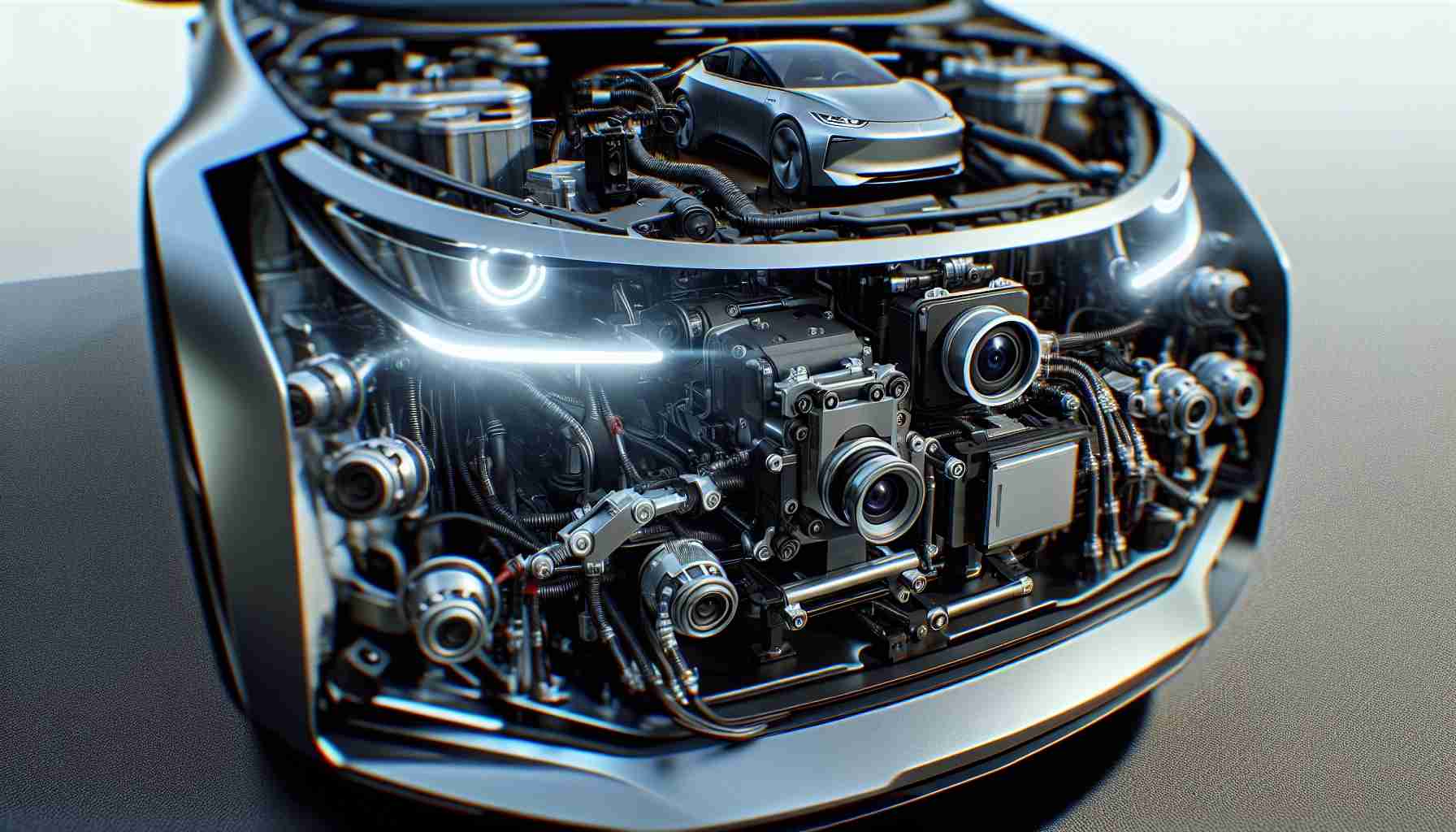Tesla Faces New Challenges as Rearview Camera Issues Arise
Recently, Tesla has once again found itself in the eye of a storm, as significant concerns regarding its rearview camera systems have come to light. This situation follows a fresh investigation initiated by the NHTSA concerning the Smart Summon feature, placing further scrutiny on the automotive giant.
On January 10, Tesla disclosed that approximately 239,000 vehicles in the U.S. might be impacted, comprising various models including the Model 3, Model S, Model Y, and Model X. The issue stems from a potential design flaw in the integrated circuits of the rearview camera system, which can lead to malfunctions in colder conditions.
In response, Tesla is implementing a complimentary software update aimed at preventing this defect from escalating. This update is not only designed to fix current issues but can also identify vehicles that have already experienced camera failures.
For those affected, Tesla has pledged to assist with necessary repairs, though the notification process will begin on March 7. Owners experiencing problems should reach out to Tesla’s customer service for immediate guidance.
Moving forward, Tesla is reinforcing its commitment to safety and reliability by enhancing its quality control measures and utilizing over-the-air updates. As customers anticipate improvements, it’s crucial to stay informed about any notifications regarding vehicle performance—particularly for those reliant on the rearview camera system when reversing.
Wider Implications of Tesla’s Rearview Camera Challenges
The current rearview camera issues at Tesla not only pose challenges for the company but could have larger implications for automotive safety standards and the evolving landscape of driver-assistance technologies. As electric vehicles (EVs) gain popularity, the scrutiny faced by Tesla may prompt regulators globally to enforce more stringent safety protocols for all manufacturers. This could lead to a reevaluation of how automakers handle software updates and hardware integrations, emphasizing the necessity of reliability in advanced driver-assistance systems (ADAS).
Moreover, the incident raises questions about the broader impacts on consumer trust within the EV market. As more consumers consider transitioning to electric vehicles, perceptions of reliability and safety become paramount. An erosion of trust due to recurring issues could slow the momentum of EV adoption, ultimately affecting sales and market competitiveness across the industry.
From an environmental perspective, persistent software issues might hinder the momentum towards sustainable transportation goals. Delays in EV adoption could slow down progress towards reducing carbon emissions, potentially impacting global efforts to combat climate change.
Looking forward, we may see a shift towards greater transparency in vehicle diagnostics and a push for regulations that prioritize adaptive learning technologies in automotives. Companies may also invest more in research to innovate solutions that prevent such failures from arising in the first place, solidifying vehicle safety as an essential feature of electric cars. The long-term significance of these developments will shape not just Tesla’s fortunes, but the fabric of the automotive industry as a whole.
New Challenges for Tesla: A Deep Dive into Recent Rearview Camera Issues
Introduction
Tesla, the innovative leader in electric vehicles, is facing new hurdles with significant implications for vehicle safety and performance. The recent discovery of potential malfunctions in the rearview camera systems of several Tesla models has raised alarms among vehicle owners and regulatory bodies alike. This article explores the specifics of the issue, the measures Tesla is taking, and what this means moving forward.
Overview of the Issue
On January 10, Tesla announced that about 239,000 vehicles in the U.S. are potentially affected by this malfunction. The models in question include the Model 3, Model S, Model Y, and Model X. The rearview camera system relies on integrated circuits, which may have a design flaw that causes failures in colder temperatures. This could severely affect drivers’ visibility while reversing, leading to safety concerns.
Tesla’s Response
In light of the findings, Tesla is proactively addressing the situation by deploying a complimentary software update. This update not only seeks to rectify existing issues but also enhances the system’s ability to detect vehicles that may have already experienced camera failures.
Tesla has also committed to assisting affected customers with necessary repairs. Notifications regarding the issue and repair procedures will commence on March 7. Customers experiencing problems with their rearview cameras are encouraged to contact Tesla’s customer service for detailed guidance and support.
Innovations in Safety Measures
As Tesla faces this challenge, the company is doubling down on its commitment to vehicle safety and reliability. Enhancing quality control measures and leveraging over-the-air software updates are key strategies that Tesla is employing to ensure that their vehicles meet the highest safety standards. The integration of advanced diagnostics features in their software can significantly mitigate the impact of such technical issues in the future.
Pros and Cons of the Current Situation
Pros
– Proactive Management: Tesla’s quick response in offering a software update demonstrates its focus on customer safety and satisfaction.
– Over-the-Air Updates: The capability to provide updates remotely ensures that the fixes can be applied swiftly without requiring owners to visit a service center.
Cons
– Impact on Customer Trust: Recurring technical issues may impact trust among consumers regarding the dependability of Tesla vehicles.
– Potential Regulatory Scrutiny: Ongoing investigations from bodies like the NHTSA could lead to additional regulations or fines, further complicating Tesla’s operational environment.
User Guidance: What to Do If Affected
1. Stay Informed: Keep an eye on communication from Tesla regarding updates related to your vehicle.
2. Check for Updates: Regularly check your vehicle’s software version to ensure you have the latest updates installed.
3. Contact Support: If experiencing issues with the rearview camera, do not hesitate to reach out to Tesla’s customer service for assistance.
Conclusion
The current challenges with Tesla’s rearview camera systems highlight the complexities and responsibilities that come with manufacturing advanced technology in vehicles. As Tesla navigates these rough waters, its focus on safety, reliability, and customer communication will be vital in maintaining consumer confidence. Vehicle owners are encouraged to remain vigilant about updates and practices that enhance their driving experience.
For more information about vehicle maintenance and updates, visit the official Tesla website at Tesla.













